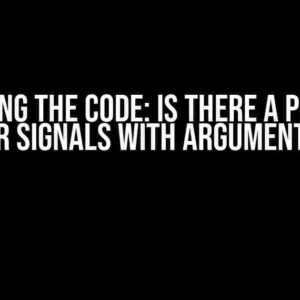Hey there, C++ enthusiasts! Are you struggling with initializing a C union struct in C++? Well, you’re in luck because today we’re going to dive into the world of C union structs and explore the importance of initializing them with double “"{“.
What is a C Union Struct?
A C union struct, also known as a union in C++, is a special type of data structure that allows storing different types of data in the same memory location. Unlike a struct, which can store multiple values of different data types, a union can store only one value at a time. This makes unions extremely useful for saving memory and optimizing program performance.
Declaring a C Union Struct
union MyUnion {
int x;
double y;
char z;
};
In the above example, we’ve declared a union called `MyUnion` that can store three different data types: an integer, a double, and a character. Note that the union can only store one value at a time, so we can’t access `x`, `y`, and `z` simultaneously.
The Importance of Initialization
Initializing a C union struct is crucial because it determines which member of the union is active. If you don’t initialize the union correctly, you might end up accessing the wrong member, leading to unexpected behavior or errors.
The Double “"{” Initialization
So, why do we need to initialize a C union struct with double “"{“? The reason is that the `{}` bracket initializer is used to specify the initial value of the union’s members. Without it, the union would be left uninitialized, leading to undefined behavior.
union MyUnion myUnion = {"empty"};
In the above example, we’re initializing the `myUnion` variable with an empty string, which means the `z` member of the union is active.
Initializing Different Members of the Union
Now that we know how to initialize a C union struct with double “"{“}, let’s explore how to initialize different members of the union.
Initializing an Integer Member
union MyUnion myUnion = {10};
In this example, we’re initializing the `x` member of the union with the value 10.
Initializing a Double Member
union MyUnion myUnion = {3.14};
In this example, we’re initializing the `y` member of the union with the value 3.14.
Initializing a Character Member
union MyUnion myUnion = {'A'};
In this example, we’re initializing the `z` member of the union with the character ‘A’.
Common Pitfalls to Avoid
When working with C union structs, it’s easy to fall into common pitfalls that can lead to errors or unexpected behavior. Here are some things to avoid:
- Don’t leave the union uninitialized, as this can lead to undefined behavior.
- Don’t access multiple members of the union simultaneously, as this can lead to data corruption.
- Don’t use the union without initializing it, as this can lead to unexpected behavior.
Best Practices for Using C Union Structs
To get the most out of C union structs, follow these best practices:
- Always initialize the union with the correct member.
- Use the union to store values of different data types, but make sure to access the correct member.
- Avoid using the union as a replacement for a struct, as this can lead to confusion and errors.
- Document your code thoroughly to ensure that other developers understand how the union is being used.
Real-World Applications of C Union Structs
C union structs have many real-world applications, including:
| Application | Description |
|---|---|
| Database Systems | Union structs can be used to store different data types in a single column, reducing storage space and improving query performance. |
| Embedded Systems | Union structs can be used to optimize memory usage and improve performance in resource-constrained embedded systems. |
| Data Compression | Union structs can be used to compress data by storing different types of data in a single structure. |
Conclusion
In conclusion, C union structs are a powerful tool in C++ that can help optimize memory usage and improve program performance. However, they require careful initialization and use to avoid common pitfalls. By following best practices and understanding how to initialize a C union struct with double “"{“}, you can unlock the full potential of this powerful data structure.
Remember, a well-initialized C union struct is a happy C union struct!
FAQs
Q: What is a C union struct?
A: A C union struct is a special type of data structure that allows storing different types of data in the same memory location.
Q: Why do I need to initialize a C union struct with double “"{“?
A: Initializing a C union struct with double “"{” determines which member of the union is active and ensures that the union is properly initialized.
Q: Can I access multiple members of a C union struct simultaneously?
A: No, you can’t access multiple members of a C union struct simultaneously, as this can lead to data corruption and unexpected behavior.
Frequently Asked Question
C++ can be a wild ride, especially when it comes to unions and structs! Got questions? We’ve got answers!
Why do I need to initialize a C union struct with double quotes “{ }” in C++?
In C++, when you define a union or struct, you need to initialize it using the syntax `{ }` to avoid any garbage values. This is because unions and structs are not initialized automatically, unlike classes. The `{ }` initializer ensures that all members are set to zero or their default values, depending on the type.
Can I use the “{ }” syntax to initialize a union or struct that has non-static members?
Yes, you can use the `{ }` syntax to initialize a union or struct that has non-static members. However, be careful when doing so, as it will only initialize the first member of the union or struct. If you want to initialize multiple members, you’ll need to use a different approach, such as using a constructor or assignment.
What happens if I don’t initialize a union or struct with “{ }” in C++?
If you don’t initialize a union or struct with `{ }`, the members will contain garbage values, which can lead to unexpected behavior and bugs in your program. This is because the memory is not zeroed out, and the values are not set to their default values. Always initialize your unions and structs to avoid these issues!
Can I use the “{ }” syntax to initialize an array of unions or structs?
Yes, you can use the `{ }` syntax to initialize an array of unions or structs. In this case, each element of the array will be initialized separately. For example, `union MyUnion arr[5] = { };` will initialize all five elements of the array.
Is it possible to initialize a union or struct with “{ }” in a function?
Yes, you can initialize a union or struct with `{ }` inside a function. However, be aware that the initialization only applies to the local variable, and the values are not retained outside the function scope. Make sure to use the initializer only when you intend to use the union or struct within that function.


